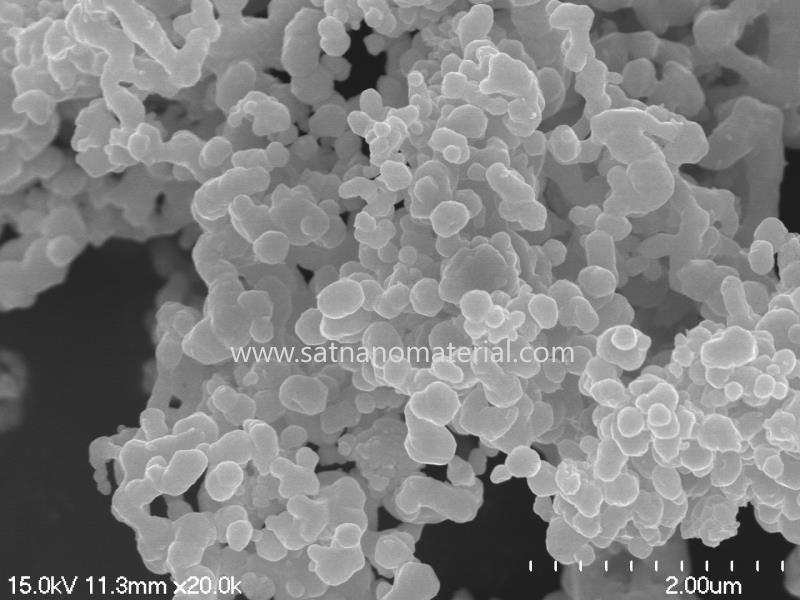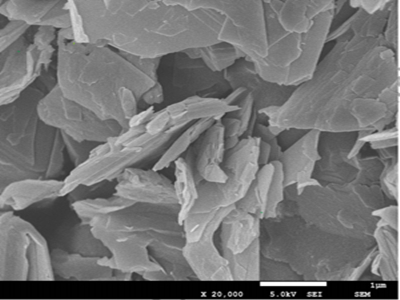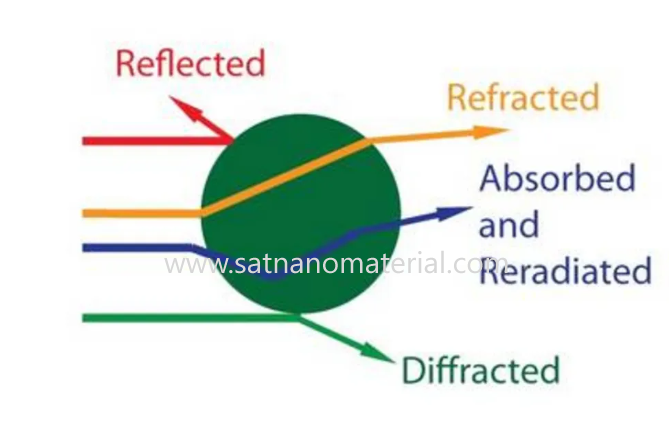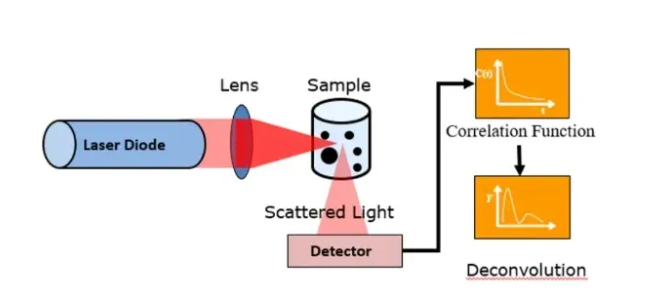Como um dos parâmetros de caracterização mais importantes do nano pó, o tamanho das partículas afeta diretamente as propriedades físicas e químicas do pó e, em seguida, afeta o desempenho do produto final. Portanto, sua tecnologia de detecção é uma ferramenta importante para a produção industrial e gestão da qualidade, e desempenha um papel insubstituível na melhoria da qualidade do produto, reduzindo custos de produção e garantindo a segurança e eficácia do produto. Este artigo partirá do princípio e comparará três métodos comuns para detecção de tamanho de partícula de pó: microscopia eletrônica, análise de tamanho de partícula a laser e método de largura de linha de difração de raios X, e analisará as vantagens, desvantagens e aplicabilidade de diferentes métodos de teste de tamanho de partícula. .
1ã Método de microscopia eletrônica
A microscopia eletrônica é uma técnica de medição de tamanho de partícula de alta resolução, dividida principalmente em microscopia eletrônica de transmissão (TEM) e microscopia eletrônica de varredura (SEM).
Microscópio Eletrônico de Varredura (SEM)
A imagem de microscopia eletrônica de varredura usa um feixe de elétrons de alta energia finamente focado para excitar vários sinais físicos na superfície de uma amostra, como elétrons secundários, elétrons retroespalhados, etc. à morfologia da superfície da amostra. Portanto, a imagem ponto a ponto pode ser convertida em sinais de vídeo para modular o brilho do tubo de raios catódicos para obter uma imagem 3D da morfologia da superfície da amostra. Devido ao menor comprimento de onda do feixe de elétrons, é possível observar em maior extensão as características/detalhes finos do material. Atualmente, a microscopia eletrônica de varredura pode ampliar imagens de objetos em centenas de milhares de vezes seu tamanho original, permitindo a observação direta do tamanho e da morfologia das partículas. A resolução ideal pode chegar a 0,5 nm. Além disso, após a interação entre o feixe de elétrons e a amostra, serão emitidos raios X característicos com energia única. Ao detectar esses raios X, a composição elementar do material testado também pode ser determinada.

Microscópio Eletrônico de Transmissão (TEM)
A microscopia eletrônica de transmissão projeta um feixe de elétrons acelerado e focado em uma amostra muito fina, onde os elétrons colidem com os átomos da amostra e mudam de direção, resultando em espalhamento de ângulo sólido. Devido à correlação entre o ângulo de dispersão e a densidade e espessura da amostra, podem ser formadas imagens com diferentes brilhos e escuridão, que serão exibidas no dispositivo de imagem após ampliação e focagem.
Comparado ao SEM, o TEM usa CCD para gerar imagens diretamente em telas fluorescentes ou telas de PC, permitindo a observação direta da estrutura interna dos materiais em escala atômica, com ampliação de milhões de vezes e resolução mais alta, com resolução ideal de<50pm . Porém, devido à necessidade de elétrons transmitidos, o TEM geralmente possui requisitos elevados para a amostra, com espessura geralmente inferior a 150nm, o mais plana possível, e a técnica de preparação não deve produzir nenhum artefato na amostra (como precipitação ou amorfização) . Ao mesmo tempo, as imagens de microscopia eletrônica de transmissão (TEM) são projeções 2D da amostra, o que aumenta a dificuldade para os operadores interpretarem os resultados em alguns casos.

2ã Método de análise de tamanho de partículas a laser
O método de análise de tamanho de partícula a laser é baseado na difração de Fraunhofer e na teoria de espalhamento de Mie. Após a irradiação do laser nas partículas, partículas de tamanhos diferentes produzirão vários graus de dispersão de luz. Partículas pequenas tendem a espalhar a luz em uma faixa de ângulo amplo, enquanto partículas grandes tendem a espalhar mais luz em uma faixa de ângulo menor. Portanto, a distribuição do tamanho das partículas pode ser testada analisando o fenômeno de difração ou espalhamento de partículas. Atualmente, os analisadores de tamanho de partículas a laser são divididos em duas categorias: espalhamento de luz estática e espalhamento dinâmico.
Método de dispersão de luz estática
O método de dispersão de luz estática é um método de medição que utiliza um feixe de laser monocromático e coerente para irradiar uma solução de partículas não absorventes ao longo da direção do incidente. Um fotodetector é usado para coletar sinais como intensidade e energia da luz espalhada, e as informações são analisadas com base no princípio de espalhamento para obter informações sobre o tamanho das partículas. Devido ao fato de este método obter informações instantâneas de uma só vez, é denominado método estático. Essa tecnologia pode detectar partículas que variam de tamanho submícron a milimétrico, com uma faixa de medição ultra ampla, além de muitas vantagens, como velocidade rápida, alta repetibilidade e medição on-line. No entanto, para amostras aglomeradas, o tamanho das partículas de detecção é geralmente muito grande. Portanto, o uso desta tecnologia requer alta dispersão da amostra, e dispersantes ou caixas ultrassônicas podem ser adicionados para auxiliar na dispersão da amostra. Além disso, de acordo com o princípio de espalhamento de Rayleigh, quando o tamanho da partícula é muito menor que o comprimento de onda da onda de luz, o tamanho da partícula não afeta mais a distribuição angular da intensidade relativa da luz espalhada. Neste caso, o método de dispersão de luz estática não pode ser usado para medição.
Qualquer partícula suspensa num líquido sofrerá continuamente um movimento irregular, conhecido como movimento browniano, e a intensidade do seu movimento depende do tamanho da partícula. Nas mesmas condições, o movimento browniano das partículas grandes é lento, enquanto o das partículas pequenas é intenso. O método de espalhamento dinâmico de luz é baseado no princípio de que quando as partículas sofrem movimento browniano, a intensidade total da luz espalhada flutuará e a frequência da luz espalhada mudará, alcançando assim a medição do tamanho das partículas medindo o grau de atenuação da intensidade da luz espalhada. funcionar ao longo do tempo.

3ã Método de ampliação por difração de raios X (XRD)
Quando um elétron em alta velocidade colide com um átomo alvo, o elétron pode derrubar um elétron na camada K dentro do núcleo e criar um buraco. Neste momento, o elétron externo com maior energia transita para a camada K, e a energia liberada é emitida na forma de raios X (raios da série K, onde os elétrons fazem a transição da camada L para a camada K chamada K α ). Normalmente, padrões de difração exclusivos podem ser gerados com base em fatores como composição do material, forma do cristal, modo de ligação intramolecular, configuração molecular e conformação.
De acordo com a fórmula de Xie Le, o tamanho dos grãos pode ser determinado pelo grau de alargamento das bandas de difração de raios X. Quanto menor o grão, mais difusas e ampliadas se tornarão suas linhas de difração. Portanto, a largura dos picos de difração nos padrões de difração de raios X pode ser usada para estimar o tamanho do cristal (tamanho do grão). De modo geral, quando as partículas são monocristais, este método mede o tamanho das partículas. Quando as partículas são policristalinas, este método mede o tamanho médio dos grãos individuais que constituem uma única partícula.

Fórmula de Xie Le (onde K é a constante de Xie Le, geralmente 0,89, β é a altura da metade da largura do pico de difração, θ é o ângulo de difração e λ é o comprimento de onda dos raios X)
Em resumo,
Entre os três métodos de detecção comumente usados, a microscopia eletrônica pode fornecer imagens intuitivas de partículas e analisar seu tamanho de partícula, mas não é adequada para detecção rápida. O método de análise de tamanho de partículas a laser utiliza o fenômeno de dispersão de luz das partículas, que tem as vantagens de velocidade e precisão, mas requer altos requisitos para a preparação da amostra. A regra da largura de linha da difração de raios X não é usada apenas para medir o tamanho do grão dos nanomateriais, mas também fornece informações abrangentes sobre a fase e a estrutura cristalina, mas é mais complexa para análise de materiais de grãos grandes.
 serviço on-line
serviço on-line 13929258449
13929258449 admin@satnano.com
admin@satnano.com + 8613929258449
+ 8613929258449